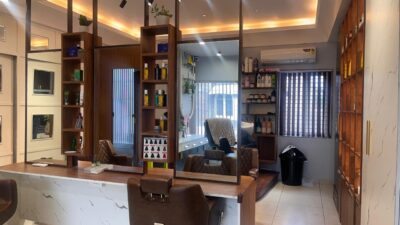As technology continues to evolve at a rapid pace, wearable devices have emerged as a significant innovation reshaping how we interact with digital content. From fitness trackers and smartwatches to augmented reality (AR) glasses and wearable health monitors, wearable technology is no longer science fiction—it’s part of our everyday lives. But these devices are only as powerful as the software running them. That’s where Wearable App Development Services come in.
In this beginner’s guide, we’ll explore what wearable app development services are, why they matter, the types of apps being built, and what businesses and developers need to know before jumping into this growing field.
What Are Wearable App Development Services?
Wearable app development services refer to the process and expertise involved in designing, developing, and deploying applications specifically for wearable devices. These services are offered by specialized software development companies or freelance developers who understand the unique requirements of wearables.
Unlike mobile or web applications, wearable apps must be designed with compact interfaces, efficient battery usage, and often real-time data processing. Developers must account for various sensors, connectivity issues (like syncing with smartphones), and platform-specific guidelines (like watchOS, Wear OS, or Fitbit OS).

Why Are These Services Important?
With the global wearable technology market projected to exceed $100 billion in the coming years, businesses are recognizing the value of tapping into this space. Here’s why wearable app development services matter:
- Enhanced User Engagement: Wearables offer more personalized and real-time interactions with users, increasing engagement.
- Health and Fitness Insights: Apps that track activity, heart rate, sleep, or even stress levels help users monitor their well-being.
- Enterprise Applications: Companies are integrating wearable tech into operations—for example, smart glasses for warehouse workers or hands-free communication tools.
- Data Collection: Wearables provide a constant stream of user data, which can be used (ethically) to improve products, services, and marketing strategies.
- Competitive Edge: Offering a wearable app can differentiate a brand, particularly in fitness, healthcare, and lifestyle markets.
Common Types of Wearable Apps
Wearable app development spans various sectors. Here are some popular categories:
1. Fitness & Health Apps
These apps track steps, calories burned, workouts, and biometric data like heart rate and oxygen levels. Examples include Fitbit, Strava, and Apple Health.
2. Healthcare Monitoring Apps
Used by patients and healthcare professionals, these apps monitor chronic conditions, remind users to take medication, or alert them to health anomalies.
3. Productivity & Utility Apps
Think calendar notifications, weather alerts, voice assistants, or to-do lists—all optimized for a wrist or wearable interface.
4. Navigation Apps
Cyclists, runners, and travelers benefit from turn-by-turn directions or location-based alerts delivered through their wearables.
5. Gaming & Entertainment Apps
Though less common, games designed for AR glasses or minimal-input games for smartwatches are on the rise.
6. Enterprise & Industry Apps
Used in logistics, construction, and field services, these apps provide hands-free access to data, communication tools, or real-time instructions.
Key Platforms for Wearable App Development
Before diving into development, it’s crucial to understand the major wearable platforms:
- Apple watchOS: For Apple Watch apps, often paired with iOS development.
- Google Wear OS: Used for Android-based smartwatches from various brands.
- Fitbit OS: For apps on Fitbit devices, especially health and wellness-focused.
- Tizen: Samsung’s operating system, previously used in Galaxy Watches.
- Garmin Connect IQ: Platform for Garmin wearables, popular in outdoor and sports segments.
Each platform has its own SDK (Software Development Kit), APIs, and development guidelines.
What’s Involved in Wearable App Development?
Wearable app development is more than just downsizing a smartphone app. Here are some key components:
1. User Interface (UI) Design
The UI must be intuitive, minimal, and suited to small screens. Voice commands, gestures, and haptic feedback often replace or supplement traditional inputs.
2. Sensor Integration
Wearables come with sensors like accelerometers, gyroscopes, heart rate monitors, GPS, and more. Developers must integrate and process this data efficiently.
3. Cross-Device Synchronization
Most wearable apps communicate with a paired device, typically a smartphone. Ensuring smooth and fast syncing is crucial for usability.
4. Battery Optimization
Wearable devices have limited battery capacity. Apps must be lightweight and power-efficient.
5. Data Security & Privacy
Because wearable apps often deal with sensitive personal data, security protocols and compliance with regulations like HIPAA or GDPR are essential.
Who Needs Wearable App Development Services?
Wearable app development services are ideal for:
- Startups building health or fitness-focused products.
- Healthcare providers wanting remote monitoring solutions.
- Retail and marketing firms offering personalized experiences via wearables.
- Enterprises seeking to enhance operations through hands-free tech.
- Game developers experimenting with AR or wearable gaming.
Choosing a Wearable App Development Partner
When selecting a development service, consider the following:
- Experience with specific platforms (watchOS, Wear OS, etc.)
- Portfolio of previous wearable apps
- Understanding of UX for wearables
- Ability to handle cross-platform development
- Focus on security and data handling
Final Thoughts
Wearable app development services play a critical role in unlocking the potential of wearable technology. Whether you’re a business looking to improve customer engagement or a healthcare provider exploring remote care solutions, wearables offer exciting possibilities. As more consumers adopt these devices, investing in quality, user-friendly wearable apps is becoming not just a trend—but a necessity.



